REU Projects and Mentors
Note: Projects are continually evolving and may differ slightly from the description
| |||
| Elohim Becerra | |||
| Greg Taylor |
|
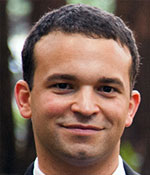 Victor Acosta
Victor Acosta
Quantum optics using color centers in diamond. The student will work on an ongoing quantum sensing project aimed at using NV centers to detect the magnetic fields produced by superparamagnetic iron oxide nanoparticles attached to cancer cells.
You will learn: Laboratory (Classical) Optics, Electronics, Instrumentation, Computational Packages, Data Reduction/Fitting
Rouzbeh Allahverdi
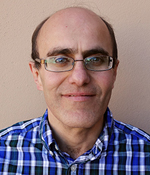 Research at the interface of theoretical high energy physics and cosmology – the first second after the big bang. Work focuses on building new particle physics models that address important questions like the nature of dark matter and the origin of matter-antimatter asymmetry, and testing their novel experimental signatures.
Research at the interface of theoretical high energy physics and cosmology – the first second after the big bang. Work focuses on building new particle physics models that address important questions like the nature of dark matter and the origin of matter-antimatter asymmetry, and testing their novel experimental signatures.
You will learn: Mathematical Analysis, Computational Packages (Matlab, Mathematica, etc.), Python, Literature Searching
Susan Atlas
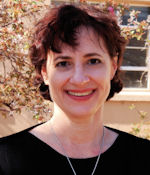 Theoretical and computational modeling of problems in chemical physics.
Theoretical and computational modeling of problems in chemical physics.
Student projects:
- Polymer physics: Modeling liquid-liquid phase separation of designed elastin-like polypeptides (ELPs), using molecular dynamics, lattice Monte Carlo simulations, and machine learning techniques, in combination with experimental data. ELPs serve as important model systems for understanding how the molecular structure and composition of intrinsically disordered proteins (IDPs) influence the emergent properties of membraneless organelles in the cell, and for the practical development of new functional biomaterials.
- Materials chemistry: rational design of high-temperature high-entropy alloys, using first-principles density functional theory, statistical mechanics, and machine learning to predict and test elastic properties of novel materials.
- Chemical physics: understanding and analyzing fundamental chemical bonding properties of molecular systems (amino acids, copper oxides) using radial basis function neural networks and ensemble density functional theory.
Projects (1) and (2) are in collaboration with experimental labs.
You will learn: Linux, Matlab Visualization, supercomputing, Scripting, High-Level Language
Darcy Barron
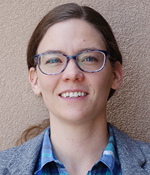 Experimental measurements of cosmic microwave background polarization – POLARBEAR superconducting instrumentation and data analysis.
Experimental measurements of cosmic microwave background polarization – POLARBEAR superconducting instrumentation and data analysis.
Our group works on developing instruments and creating datasets to better understand our universe.
Our current focus is on measuring the polarization of the cosmic microwave background (CMB). This includes our collaboration on the POLARBEAR/Simons Array project, which is currently commissioning three new telescopes in the remote Atacama Desert of Chile, and technology development for CMB-S4, an upcoming comprehensive CMB survey. These microwave telescopes survey the CMB and its polarization patterns, mapping the distribution of matter in our universe and probing the early universe's inflationary period.
You will learn: Electronics, Machining, Programming, Data Analysis
Elohim Becerra
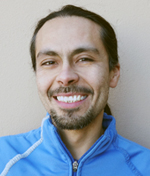 Experimental quantum optics – methods for determining quantum states of physical systems via quantum tomography.
Experimental quantum optics – methods for determining quantum states of physical systems via quantum tomography.
The Quantum Optics group performs research focusing on the study of the quantum properties of light and matter for optimal methods of measurement, information transfer, and communications.
The student will help develop a homodyne optical setup to test the viability of implementing tomographic schemes in real time, and to identify the critical experimental parameters for homodyne tomographic reconstructions.
You will learn: Classical Optics, Electronics, Homodyne Detection
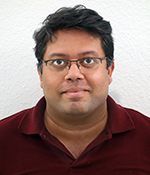 Tonmoy Chakraborty
Tonmoy Chakraborty
Light-sheet fluorescence microscopy (biophysics). The lab researches new imaging platforms for biomedical applications, especially using light-sheet based techniques.
As we know, tissues are composed of multiple cell types organized in a complex three-dimensional architecture. However, because of the limited penetration depth of visible photons, observing the molecular and structural composition of intact tissues remains challenging.
Dr. Chakraborty's research in developing these microscopes extends the spatiotemporal resolution of biomedical imaging by harnessing the synergy between physics, biology, computer-science and engineering. Recent efforts have focused on improved 3D scanning optics. The REU student will help design and implement novel scanning methods.
You will learn: Optics, Computer Control of Experiments
Francis-Yan Cyr-Racine
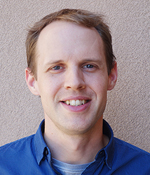 Theoretical particle astrophysics. Searching beyond the standard model using cosmological and astrophysical data. Emphasis is on CMB and neutrinos, and dark matter particle properties from observation of the smallest galaxies. Possible REU student projects will focus on numerical implementation of physical models for Milky Way satellite galaxies, or on the application of scaling symmetries to attempt to resolve discrepancies in estimates of the Hubble constant.
Theoretical particle astrophysics. Searching beyond the standard model using cosmological and astrophysical data. Emphasis is on CMB and neutrinos, and dark matter particle properties from observation of the smallest galaxies. Possible REU student projects will focus on numerical implementation of physical models for Milky Way satellite galaxies, or on the application of scaling symmetries to attempt to resolve discrepancies in estimates of the Hubble constant.
You will learn: Python, high-performance computing, data analysis, scientific communication
Diana Dragomir
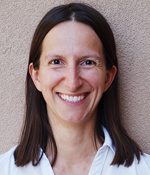 Exoplanets & the Transiting Exoplanet Survey Satellite (TESS). Many exoplanets discovered by TESS are accessible to a wide swath of follow-up observations, including measurements of their mass and atmospheres, dynamical properties and system architecture, as well as the precise characterization of their host stars. An REU student in Dr. Dragomir’s group will leverage the TESS ensemble of exoplanets to uncover new statistical trends and gain deeper insights into the composition, population-level properties and formation of small exoplanets.
Exoplanets & the Transiting Exoplanet Survey Satellite (TESS). Many exoplanets discovered by TESS are accessible to a wide swath of follow-up observations, including measurements of their mass and atmospheres, dynamical properties and system architecture, as well as the precise characterization of their host stars. An REU student in Dr. Dragomir’s group will leverage the TESS ensemble of exoplanets to uncover new statistical trends and gain deeper insights into the composition, population-level properties and formation of small exoplanets.
You will learn: Python, data reduction and analysis
Douglas Fields
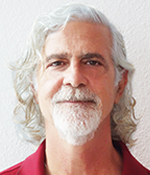 Experimental particle physics, working with LEGEND and CCM experiments. The former aims to determine if the neutrino is its own antiparticle, while the latter is a search for a “sterile” neutrino. Prof. Fields works closely with two research groups at Los Alamos National Labs and is part of an international team of scientists. The REU student will work on quantifying the improvement of light readout with quantum-dot coated wavelength shifters over the nominal TPB coated shifters. This will involve setting up an experiment in our lab with silicon photo-diodes, taking data, and analyzing the results.
Experimental particle physics, working with LEGEND and CCM experiments. The former aims to determine if the neutrino is its own antiparticle, while the latter is a search for a “sterile” neutrino. Prof. Fields works closely with two research groups at Los Alamos National Labs and is part of an international team of scientists. The REU student will work on quantifying the improvement of light readout with quantum-dot coated wavelength shifters over the nominal TPB coated shifters. This will involve setting up an experiment in our lab with silicon photo-diodes, taking data, and analyzing the results.
You will learn: C++ and Python, data analysis, cryogenics and photo-diodes.
Keith Lidke
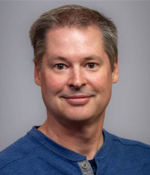 Single-molecule fluorescence microscopy, particle tracking, and hyperspectral microscopy (biophysics). The biological focus is observing and measuring kinetic parameters of interacting of proteins in live cells as well as their spatial distributions. REU projects include: exploring the precision limits of 3D single molecule localization; using imaging data to build or fit physical models of biological structures such as microtubules or membranes; developing and constructing a microscopy or spectroscopy setup.
Single-molecule fluorescence microscopy, particle tracking, and hyperspectral microscopy (biophysics). The biological focus is observing and measuring kinetic parameters of interacting of proteins in live cells as well as their spatial distributions. REU projects include: exploring the precision limits of 3D single molecule localization; using imaging data to build or fit physical models of biological structures such as microtubules or membranes; developing and constructing a microscopy or spectroscopy setup.
You will learn: advanced fluorescence microscopy, optics, MATLAB.
Akimasa Miyake
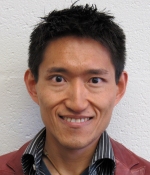 Theory of quantum information and computation, with a focus on quantum many-body systems and their relevance to quantum computation and simulation. The REU student will first learn basic knowledge about entanglement and numerical simulation of 1D quantum systems by reading a couple of introductory papers. Then, the student will use open-source computer code to calculate time evolution of entanglement in terms of so-called matrix product states: the goal is to explore entanglement and its relation to quantum algorithms and simulation. The student will be a part of the department’s Center for Quantum Information and Control (CQuIC), and interact daily with its many graduate students and post-docs.
Theory of quantum information and computation, with a focus on quantum many-body systems and their relevance to quantum computation and simulation. The REU student will first learn basic knowledge about entanglement and numerical simulation of 1D quantum systems by reading a couple of introductory papers. Then, the student will use open-source computer code to calculate time evolution of entanglement in terms of so-called matrix product states: the goal is to explore entanglement and its relation to quantum algorithms and simulation. The student will be a part of the department’s Center for Quantum Information and Control (CQuIC), and interact daily with its many graduate students and post-docs.
You will learn: Understanding scientific literature, numerical simulations.
Paul Schwoebel
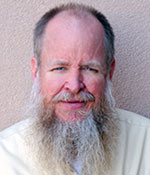 Development of X-ray sources to improve image quality in tomographic medical imaging modalities such as computed tomography (CT) and digital tomosynthesis for breast cancer screening. REU projects are hands-on work in the laboratory involving: designing and building ultrahigh vacuum chambers, control electronics, prototype X-ray imaging systems, or computer interfaces for data collection.
Development of X-ray sources to improve image quality in tomographic medical imaging modalities such as computed tomography (CT) and digital tomosynthesis for breast cancer screening. REU projects are hands-on work in the laboratory involving: designing and building ultrahigh vacuum chambers, control electronics, prototype X-ray imaging systems, or computer interfaces for data collection.
You will learn: Hands-on experience with UHV chambers, X-ray imaging. Electronics, computer-experiment interface
Greg Taylor
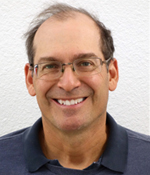 Long wavelength radioastronomy. The Long Wavelength Array Project was pioneered by Prof. Taylor and the Array (co-located with the VLA in New Mexico) is run out of UNM. The array covers the frequency range from 5 – 88 MHz. Caltech, JPL, AFRL, NRL, TTU and ASU are LWA collaborators. Six of Taylor's past undergraduates have first-authored a paper, and three others have co-authored papers. The REU student will learn to operate the array and will participate in a project on pulsars, transients, or AGN, with the goal of contributing to a publication.
Long wavelength radioastronomy. The Long Wavelength Array Project was pioneered by Prof. Taylor and the Array (co-located with the VLA in New Mexico) is run out of UNM. The array covers the frequency range from 5 – 88 MHz. Caltech, JPL, AFRL, NRL, TTU and ASU are LWA collaborators. Six of Taylor's past undergraduates have first-authored a paper, and three others have co-authored papers. The REU student will learn to operate the array and will participate in a project on pulsars, transients, or AGN, with the goal of contributing to a publication.
You will learn: Radioastronomy instrumentation, data reduction and analysis.

